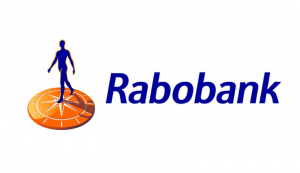
Surging feed prices and inflation costs have forced dairy producers to take a step back and reevaluate the need to produce more dairy replacement animals. To help limit replacement animals and improve the genetic potential of the herd, dairy farmers have upped their usage of beef semen on the bottom portion of their herd. As a result, dairy semen sales hit a 17-year-low earlier this year.
Throughout 2022, both beef and milk prices have consistently stayed in the green. As dairy farmers look for new ways to bring in added income, the idea of joining the beef-on-dairy revolution becomes more tempting. Five panelists from this year’s Connect Summit weighed in on current beef-on-dairy trends and the future of this growing market.
CONSUMERS WANT IT
Despite higher food prices, consumers continue to crave beef. According to Blake Foraker, a recent Ph.D. graduate from the meat science program at Texas Tech, beef-on-dairy animals may have the upper hand when it comes to meat selection at the beef counter.
“We really have a problem merchandising stakes from native beef cattle alongside steaks from conventional dairy cattle primarily because of color,” Foraker says.
As meat sits out, it begins to brown. Once a piece of meat becomes 20% brown, consumers are less likely to reach for it. Foraker notes that dairy beef reaches the 20% threshold 24hrs. before conventional. Therefore, utilizing beef genetics on dairy cattle provides a longer shelf-life than meat from pure dairy animals. Foraker also noted that consumers preferred the tenderness, juiciness and flavoring of beef-on-dairy animals over conventional beef, giving the beef-on-dairy product a competitive edge.
DATA GIVES PRODUCERS AN UPPER HAND
The use of genomics has long been a tool in a dairyman’s toolbox to allow them to further advance the genetic potential of their herd. However, utilizing genomic information has also allowed the dairy producer to make better informed decisions when it comes to using beef semen on dairy animals.
“It’s a beautiful marriage when you can combine genomic testing with the beef-on-dairy opportunity because not only do we know exactly what cow we want to make our next generation out of, but we also know which cow we don’t want to. And sometimes we can create a more profitable from our worst genetics,” says Katie Martin DiGangi, Wisconsin dairy farmer and Dairy Production Specialist for Zoetis.
DiGangi, who has dairies in both Wisconsin and Texas, has been using genomic technology for years to push her herd’s genetic potential forward. More recently, she has been leaning on genomics to not only help her operation capture the value of the demand for beef, but her clients’ operations as well.
“It’s really exciting for me to see dairies massively change their herds to how they want to change it while at the same time producing a beef-cross product and capitalizing on this new revenue stream,” she shares.
Dustin Hollermann, Director of Dairy Genetics at Riverview, LLP, possess the same forward-thinking mindset as DiGangi, noting that Riverview, a 17-farm dairy operation, uses key data points in every beef-on-dairy mating decision.
“We use data to drive our beef-on-dairy system,” Hollermann says. “Throughout our entire chain, there are different pieces of data that we are collecting to make informed decisions.”
From genomics to health information to statistics provided by the packer, data is collected throughout an animal’s entire life. From there, that information is used to help make targeted decisions for upcoming beef-on-dairy matings as well as business decisions across the 17 different operations.
Sexed Beef Semen Could be the New Trend
With more beef-on-dairy calves coming into the market, dairy farmers are seeing an increased demand for male crossbred calves. Higher prices serve as an incentive for dairy producers, like DiGangi and Hollermann, to make more male calves.
On DiGangi’s dairies, the farm retains ownership until the animal reaches 400 lb. From there, the beef-on-dairy cross is then sold on an online auction. In her experience, DiGangi has noticed a smaller price per lb. for female beef-on-dairy crosses compared to the males, with recent prices being $0.16 per lb. lower.
“Personally, we use some sexed beef male semen during certain times of the year,” DiGangi says. “We’ve focused on DPR (daughter pregnancy rate) genetically in our dairies for such a long time that we have the opportunity and we have the fertility in our cow herd to do that. And we’ve also recognized that the female beef-cross is marginalized. So, if we can create some more male beef animals, we see that marginal opportunity.”
At Riverview, Hollermann also sees the value in producing male beef-on-dairy calves.
“On the male calf side, we clearly see that value. There’s gains in feed efficiency and also days on feed with the male calves. They finish just a little bit quicker. So, there’s a real value to that sexed beef straw,” he says.
By utilizing the data collected at the farm level as well as from the packer, Riverview can make better genetic decisions that not only impact profitability on the beef side, but on the dairy side as well.
“There’s an opportunity to really target where we make our dairy replacements so we can make the highest quality replacements possible,” Hollermann adds. “Everything else gets a beef straw, and we able to really target our heifer inventories so we don’t have too many or too little [dairy] heifers. We want to produce calves that fit both our dairy and beef needs.”
BEEF-ON-BEEF EMBRYOS OFFER OPPORTUNITIES
The beef-on-dairy revolution has certainly impacted the dairy industry over the last decade, but according to Brad Brundage, Client Development Manager at Trans Ova Genetics, beef embryos may be the next new thing. He has seen a growing demand for beef-on-beef embryos within the dairy industry.
“There’s been a lot of excitement around beef embryos,” Brundage says. “However, I can’t confidently say it’s a one-size-fits-all product like beef semen can be.”
Brundage notes that beef embryos are significantly more expensive than beef semen. However, they also tend to be more valuable.
“Right now, in the beef embryo space, there’s a variety of options out there in terms of the dam side with higher quality genetics. In some cases, dairy farmers can become custom growers of beef calves for feedlots or packers. However, embryos are substantially more expensive than a unit of semen. So, to justify that additional production cost or higher break-even price, that calf needs to be worth more than a beef-on-dairy product.”
CALF CARE STILL ESSENTIAL
Whether you are raising a dairy calf, a beef calf or a crossbred, proper calf care is still essential to produce a profitable product.
“I think we’ve moved past the idea that calves are second class citizens on our farms. They are a huge profit center,” says Dr. Marrisa Hake, Director of Animal Welfare and Sustainable Farming for FairLife. “When I put on my welfare hat, these calves are a direct reflection of what’s happening on our dairy farms, even if we’re giving up ownership of them.”
Hake recommends treating beef-on-dairy calves just like you would a replacement animal. Providing quality colostrum, vaccinations and care in a timely manner will help producers ensure a more profitable calf.
For producers who sell or send their calves to calf ranches, Hake suggests producers do their homework before allowing calves to leave the farm.
“Working with reputable calf ranches is incredibly important along with making sure that we’re starting off these calves on the right foot,” she says. “Make sure that you’re working with calf ranches that are reflecting the same values as your dairy.”
No Longer a By-Product
Gone are the days when beef-on-dairy calves were viewed as a by-product. Today, they are just as valuable, if not more valuable than traditional replacement heifers. As the beef-on-dairy market continues to grow, utilizing these trends and tools will allow dairy farmers to capture more revenue while continuing to drive their operation forward.























